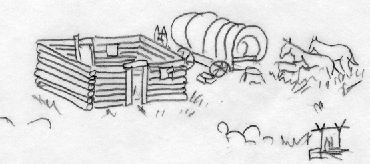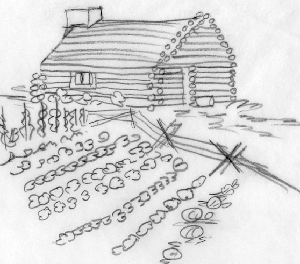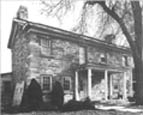Biographical sketch of Orville Sutherland Cox, continued
5 Manti
He arrived at the future site of Manti November 19, 1849. The journey from Salt Lake City to the Sanpete valley occupied one month, breaking new roads, fixing fords, and building dug-ways. The forty families worked industriously, sometimes only moving forward two or three miles. One six mile stretch in Salt Creek Canyon occupied them a whole week. The only settlement between Salt Lake and Manti was Provo, consisting of a little fort of green cottonwood logs.
After getting through Salt Creek Canyon in two weeks, they worked to their utmost strength for it began snowing on them there; and it was far from being a desirable winter’s home. That winter was one of the hardest with the heaviest snow fall for many succeeding years. Arriving at their destination, camp was made by the Morley’s company on the south side of Temple Hill which was a sheltered spot. Now they must do their utmost in canyons, raising log cabins; sawing lumber on the saw pit, which was the most primitive of saw mills.

Between their individual duties, they found time to build log school and a bowery, and then a meeting house. They felt that it was quite commodious. Here in the long evenings of the winter of 1850-1 Cox taught a singing and dancing school. Sarah Petty was the first school Ma’am. In the winter of 1850-1, school was taught by Jesse W. Fox. In 1850 he was elected Alderman.

This is the O S Cox rock house in Manti.
(Click to enlarge)

To be sure, nobody appreciated more than he did a liberty pole, and all that it typified, so he was commissioned to find one at the earliest convenient moment for Manti; this he did in1850. Ten years he labored faithfully for the up building of Manti, and then like Boon and Crockett, “he wanted more elbow room” and moved to Fairview, Sanpete county. He also moved part of his family to Gunnison (Hog Wallow, it was called then) and raised two crops there. In February 1864, he moved part of his family to Glenwood, built a cabin there and raised a crop. He sold out and moved elsewhere to engineer ditches. He engineered over forty ditches in Utah and Nevada, as near as his children can remember in 1910, as well as doing all other kinds of pioneer work.